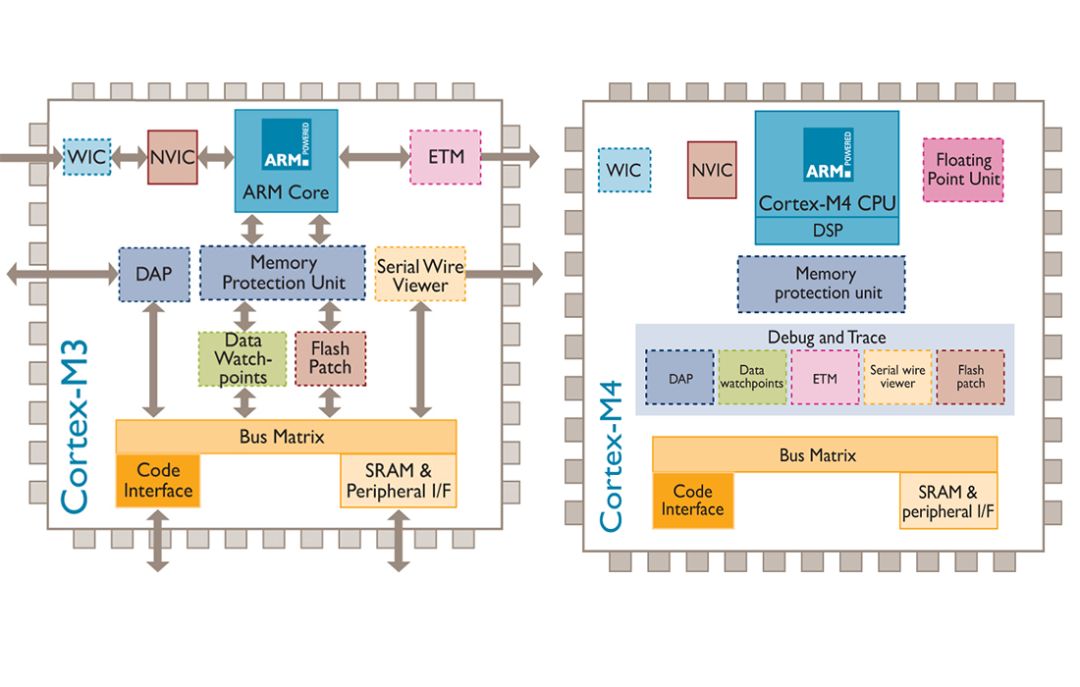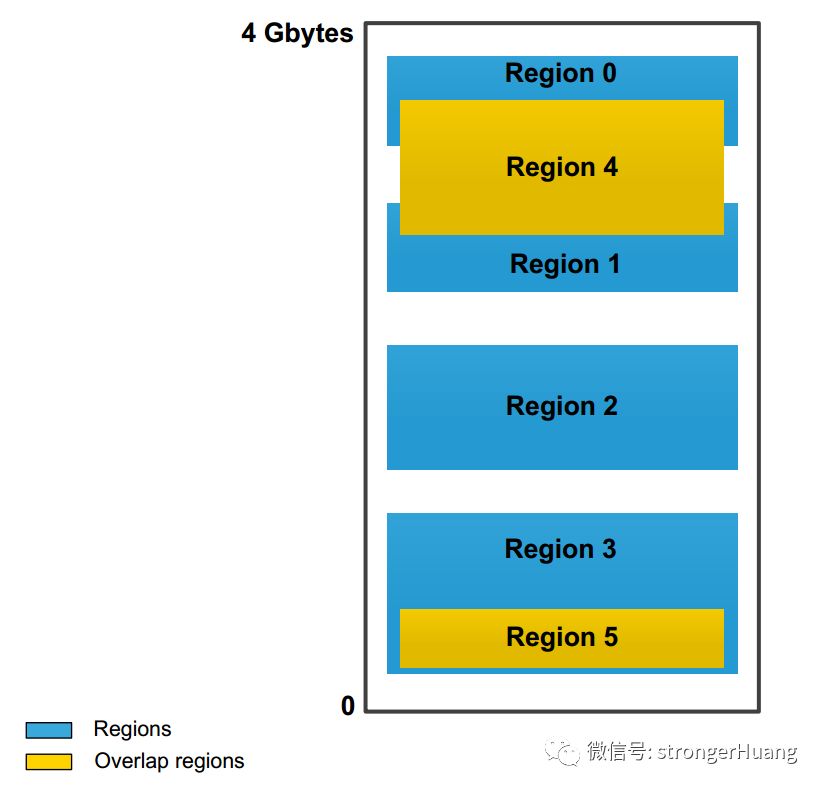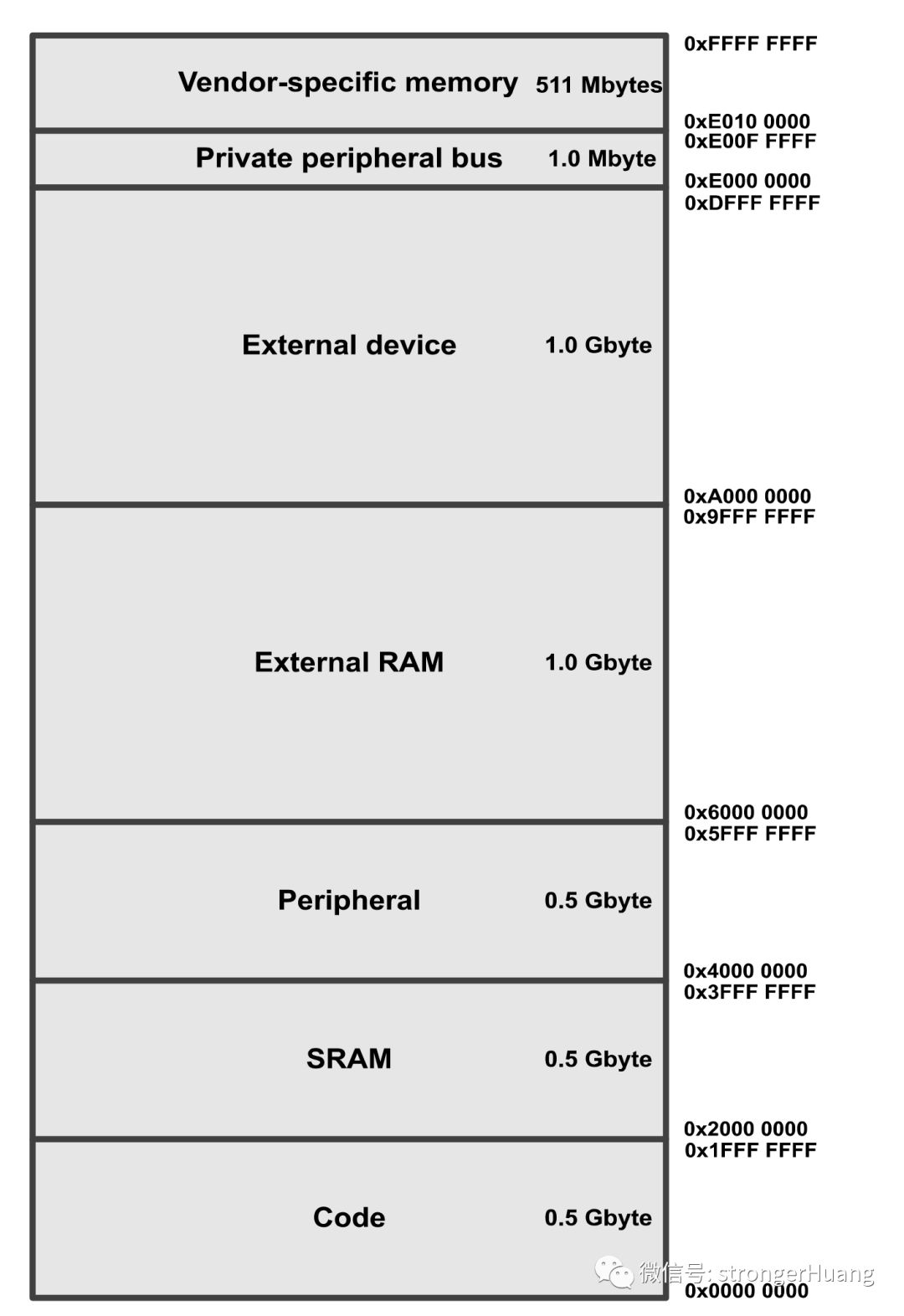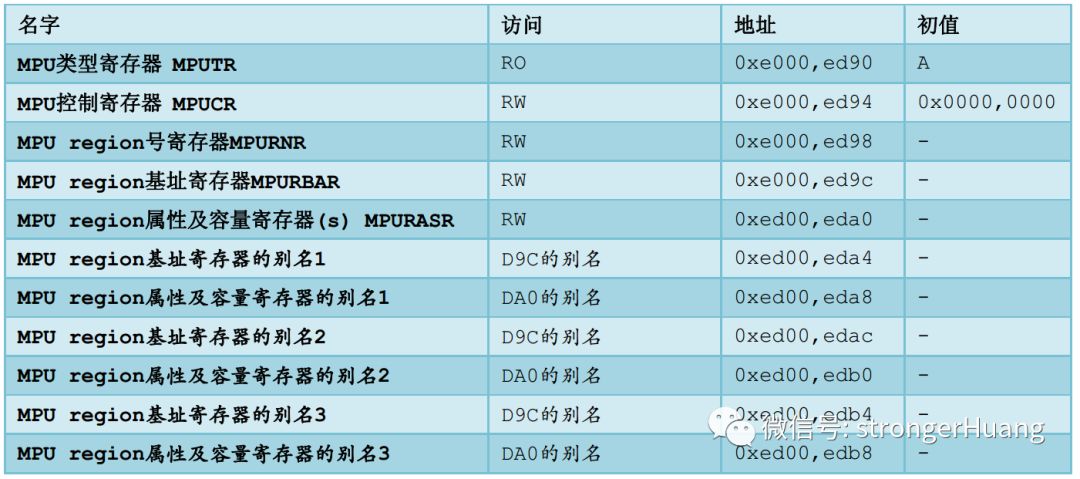
Everyone often sees abbreviations like MCU, MPU, MMU, but do you know what MPU is?
1Introduction
I wonder if everyone has paid attention to some content about the Cortex-M core; most models of STM32 have an MPU.


2
Understanding MPU and Its Function
-
Prevent user applications from corrupting data used by the operating system. -
Prevent one task from accessing the data area of another task, thus isolating tasks. -
Set critical data areas as read-only, fundamentally eliminating the possibility of corruption. -
Detect unexpected memory access, such as stack overflow and array out-of-bounds. -
Additionally, the MPU can set other access attributes for memory regions, such as whether they are bufferable or cacheable.
3
Understanding Wild Pointers
To review, what is a pointer? A pointer is actually an unsigned integer in memory, but its value is given a special interpretation: it represents the address of a variable or function. That’s why it is vividly called a “pointer,” as if it points to a certain house. Before using a pointer, it must first point to something meaningful and permissible for the program to use—data and code. A “wild pointer” refers to a pointer variable whose value exceeds the legal range, causing it to “point aimlessly.” Logic errors in the program, array out-of-bounds, stack overflow, uninitialized pointers, improper handling of caches and buffers, chaotic conditions in a multi-tasking environment, or even malicious destruction can all create wild pointers. If a wild pointer is used to read or modify memory, the locations being read or modified are unpredictable. The former leads to reading corrupted data, while the latter can damage data of unknown purposes. This often leads to inexplicable functional confusion in the system, and in severe cases, it can cause the system to lose control or crash without warning or reason.
A wild pointer is like “a thorn in the flesh, a maggot in the sauce”: a single wild pointer can destroy the entire system, and it is extremely concealed, making it difficult to locate the source of the wild pointer through symptoms. It may even be impossible to determine whether symptoms are caused by a wild pointer (as programs grow larger, there are many other bugs that can lead to the same symptoms). For typical microcontroller systems, there is no way to prevent the damage caused by wild pointers; it entirely relies on the programmer’s quality and self-discipline. However, even the wisest can make mistakes. Especially when the program scale becomes large, the complexity increases exponentially, with countless threads tangled together. Even the cautious Zhuge Liang or the genius Bill Gates cannot guarantee that there are no oversights.
4
Further Understanding MPU

5
MPU Learning Resources

1. STM32 Memory Mapping

2. MPU Register Set

Privileged program code (such as OS kernel and exception service routines)
User-level program code
Privileged program data storage, located in the code area (data_stack)
User-level program data storage, located in the code area (data_stack)
General data storage, located in other memory areas (e.g., SRAM)
System device area, accessible only to privileged levels, such as the NVIC and all address ranges of the MPU registers
General peripheral area, such as UART, ADC, etc.
3. Cube HAL MPU Configuration Example
void MPU_RegionConfig(void){ MPU_Region_InitTypeDef MPU_InitStruct; /* Disable MPU */ HAL_MPU_Disable(); /* Configure RAM region as Region N°0, 8kB of size and R/W region */ MPU_InitStruct.Enable = MPU_REGION_ENABLE; MPU_InitStruct.BaseAddress = 0x20000000; MPU_InitStruct.Size = MPU_REGION_SIZE_8KB; MPU_InitStruct.AccessPermission = MPU_REGION_FULL_ACCESS; MPU_InitStruct.IsBufferable = MPU_ACCESS_NOT_BUFFERABLE; MPU_InitStruct.IsCacheable = MPU_ACCESS_CACHEABLE; MPU_InitStruct.IsShareable = MPU_ACCESS_SHAREABLE; MPU_InitStruct.Number = MPU_REGION_NUMBER0; MPU_InitStruct.TypeExtField = MPU_TEX_LEVEL0; MPU_InitStruct.SubRegionDisable = 0x00; MPU_InitStruct.DisableExec = MPU_INSTRUCTION_ACCESS_ENABLE; HAL_MPU_ConfigRegion(&MPU_InitStruct); /* Configure FLASH region as REGION N°1, 1MB of size and R/W region */ MPU_InitStruct.BaseAddress = 0x08000000; MPU_InitStruct.Size = MPU_REGION_SIZE_1MB; MPU_InitStruct.IsShareable = MPU_ACCESS_NOT_SHAREABLE; MPU_InitStruct.Number = MPU_REGION_NUMBER1; HAL_MPU_ConfigRegion(&MPU_InitStruct); /* Configure FMC region as REGION N°2, 0.5GB of size, R/W region */ MPU_InitStruct.BaseAddress = 0x60000000; MPU_InitStruct.Size = MPU_REGION_SIZE_512MB; MPU_InitStruct.IsShareable = MPU_ACCESS_SHAREABLE; MPU_InitStruct.Number = MPU_REGION_NUMBER2; HAL_MPU_ConfigRegion(&MPU_InitStruct); /* Enable MPU */ HAL_MPU_Enable(MPU_PRIVILEGED_DEFAULT);}
1.The latest agenda for the second domestic embedded operating system technology and industry development forum is out!
2.Embedded engineer job hunting memoir~
3.There is a shortage of 250,000 chip talents; is establishing Nanjing Integrated Circuit University useful?
4.The secret of CPU executing programs is hidden in these 15 pictures.
5.In fact, there is also firmware between software and hardware! Did you know?
6.Breaking news, AMD is rumored to acquire Xilinx for $30 billion! The deal could be reached as early as next week.

Disclaimer: This article is a network reprint, and the copyright belongs to the original author. If there are copyright issues, please contact us, and we will confirm the copyright and pay the remuneration or delete the content based on the copyright certificate you provide.
